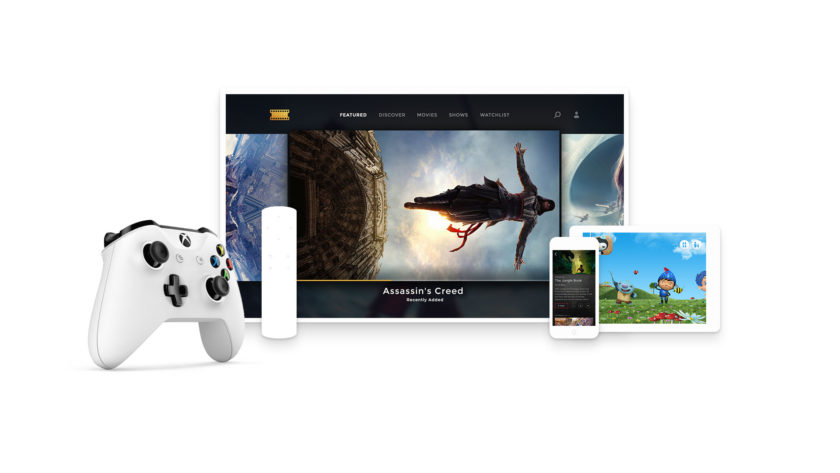Connections

You.i TV: Creating Fans — and Customers — Across Screens
Story Highlights
Privately held company You.i TV has had a straight-forward goal since day one: help media and entertainment companies create fans of content — and keep them — via a multi-screen video app platform that takes direct-to-consumer as gospel. Sony, Turner, Rogers Communications and others are counted among companies who’ve tapped the You.i Engine platform for video applications.
Trisha Cooke, VP of marketing for the company, chatted with the Media & Entertainment Services Alliance (MESA) about the importance of immersive video, how the company looked at gaming engines for their platform, and the opportunities a multi-screen strategy brings to the table.
MESA: How did You.i TV come about to begin with, and what gap in the market has the company sought to fill?
Cooke: Users have high expectations of app experience and app availability these days, thanks in part to the ubiquity and ease of use of the leading video applications. To be successful, applications need to be available everywhere the user wants them to be, and create a great, easy-to-use experience — but doing those things at pace, without compromise, is easier said than done.
As it becomes imperative to build a direct relationship with your customers, that kind of app experience — easy to use and available everywhere — becomes table stakes, but as we all know, it comes with not-insignificant challenges on the technical side.
That’s where You.i TV comes in. Our co-founders, Jason Flick and Stuart Russell, asked themselves a question that underpins the company and our technology: ’Why do video game users get immersive visuals on every screen, but app users don’t?’ Drawing on an extensive background in video game engine development, they built an app experience platform from the ground up, that allows media and entertainment companies to deliver user-centric, immersive app experiences, consistently, on every screen — using a single codebase.
MESA: You.i’s Engine app platform is built ‘on the principles of video game engines. Why is that mindset important in the media and entertainment app space?
Cooke: With a race to win the user’s attention, direct-to-consumer businesses are driving media and entertainment companies to rethink how they engage with users, and no one is content to rely on the old way of doing things. That includes the old way of building and launching applications, where compromises to the front-end experience were endemic.
 That’s where the mindset — and even more so, the technology — of a video game engine approach to development becomes paramount.
That’s where the mindset — and even more so, the technology — of a video game engine approach to development becomes paramount.
Video game companies are experts at delivering an immersive user experience, and they understand that what happens on the screen – the user experience – is the most important part of the application.
Backend systems have gotten the lion’s share of the attention and the investment for many years, and rightly so, as they’re critical to the success of any video application. However, with the focus on building direct relationships with customers, the front-end experience needs to be elevated alongside the focus on backend technology. That’s where You.i Engine comes in.
It’s software built from the ground up for the needs of cross-platform user interfaces. It prioritizes smooth, immersive motion designs, full design flexibility and unparalleled performance on any screen, by leveraging the GPU in a similar way to a video game engine.
MESA: You.i TV’s app platform promises near-ubiquitous cross-platform coverage, a rarity in the media and entertainment space. What are opportunities for content owners now that they can reach every screen?
Cooke: Content owners can now focus on two of the biggest goals in any video app business: increasing their audience reach, and increasing their audience retention.
Now, audience retention is a lofty goal, but with the power of You.i Engine’s design toolset and flexibility, brands have unprecedented control over the look, feel and behavior of the front-end experience of their application. They can make changes and iterate on front end designs whether the app is still in development, or already in market. Live, production application designs can be changed in a matter of minutes using the You.i Engine design workflow, so if they need to react to user input, they can — and quickly.
That front end design flexibility is what really sets a great app apart, especially when it offers the same great experience on every screen. As Colin Dixon recently noted, “Spending time and money on a great app experience is, perhaps, an OVSPs best defense against app apathy.” You.i Engine takes the technical headaches out of doing that, on every platform you need to reach.
MESA: What are some of the company’s favorite use case examples, where clients have made especially good use of what You.i TV offers?
“Over time our application development costs will be reduced, because we will gain plenty of efficiencies that should save us money… if we do this right, it should improve our customer experience and increase our audiences – and those are two things that are good for revenue.”
Cooke: That’s Jeremy Legg, CTO of Turner, talking about how You.i Engine is impacting their business across the company. Turner has taken a strong position in the new world of building direct relationships with their consumers, and they’ve standardized on You.i Engine to help them deliver multiple cross-platform applications across their stable of brands. Notably, recently launched apps for Filmstruck, TBS and TNT were all built on You.i Engine, and they’re running on multiple platforms with consistent, exceptional experiences from a single codebase.
Turner’s You.i Engine-powered apps have been featured in the Apple TV store, and have ranked in the top spot in terms of downloads.
MESA: What’s next for You.i TV, what advances and offerings can we expect from the company in the coming months and years?
Cooke: We’re in the final stages of working with three leading OVP providers on a solution that offers content owners the ability to launch immersive cross-platform applications in 60 days or less, and it’ll be launching at CES this year. We’re demoing it in meetings at the Encore Tower Suites, but in the meantime, we’ve put together a comprehensive guide to selecting the right solution for your cross-platform SVOD application – including all the questions you need to ask your vendors. You can get it immediately right here.
Beyond the exciting things on our roadmap, we always have exciting things happening in our labs division, under our CTO Stuart Russell. Right now, their focus is on initiatives like AR and VR, ad technology and new open source initiatives.









